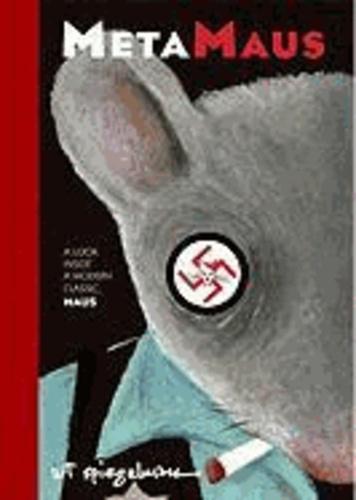Kaslov (e)k Art Spiegelman(r)en MetaMaus: A Look Inside a Modern Classic liburuaren kritika egin du
Review of 'MetaMaus: A Look Inside a Modern Classic, Maus' on 'Goodreads'
5 izar
The book tackles the 3 questions Art Spiegelman was frequently asked and is wholly organized into sections to tackle them:
1) Why the Holocaust?
2) Why Mice?
3) Why Comics?
The first two sections talk about the writing (interviewing Vladek), researching the topic, getting the thing published and trying to simply deal and live with the aftermath (both the Holocaust and the Book's publication). And I must stress the amount of research must have been maddening. There is far more in these two sections that I am able to convey, the subject is that heavy. Here we also get the chance to read the rejection letters which were fascinating in their own right. Today it is weird to imagine all the hurdles to the books publication and the skepticism during it's initial reception.
In Why Mice section I learned that there was far more meaning and history to using mice …
The book tackles the 3 questions Art Spiegelman was frequently asked and is wholly organized into sections to tackle them:
1) Why the Holocaust?
2) Why Mice?
3) Why Comics?
The first two sections talk about the writing (interviewing Vladek), researching the topic, getting the thing published and trying to simply deal and live with the aftermath (both the Holocaust and the Book's publication). And I must stress the amount of research must have been maddening. There is far more in these two sections that I am able to convey, the subject is that heavy. Here we also get the chance to read the rejection letters which were fascinating in their own right. Today it is weird to imagine all the hurdles to the books publication and the skepticism during it's initial reception.
In Why Mice section I learned that there was far more meaning and history to using mice than just a simple enough metaphor for being hunted. Also it brought a rather amusing trouble with taxonomy with many editors and librarians as to where to place the book, fiction or nonfiction, adult or children and so on.
In the final section Why Comics I thought simply well Duh, the guy is a cartoonist what was he going to make, a musical. Of course the answer was far more nuanced than that. In this section he shows us some difficulties he had with trying to fit it all into a comic book format, with some special focus on composition of individual panels. This section also shows us some of his comic book influences and what I found invaluable a two page spread of process of turning a page of interview transcript into a final page.
And finally the disc that comes with this book. I haven't yet had the chance to look at it's contents, my father's computer still has a CD drive in it so I will have to use that machine to grab that disc image before bit rot gets the disc. To think that after all this time the format that is most reliable to survive through the ages is still the humble book.
You've read Maus, You like comic books. No-brainer grab the book if you can. The day I saw this one in a book shop I had to grab it immediately, for I thought I would never be able to get my hands on it and it was only one of the two copies available.

